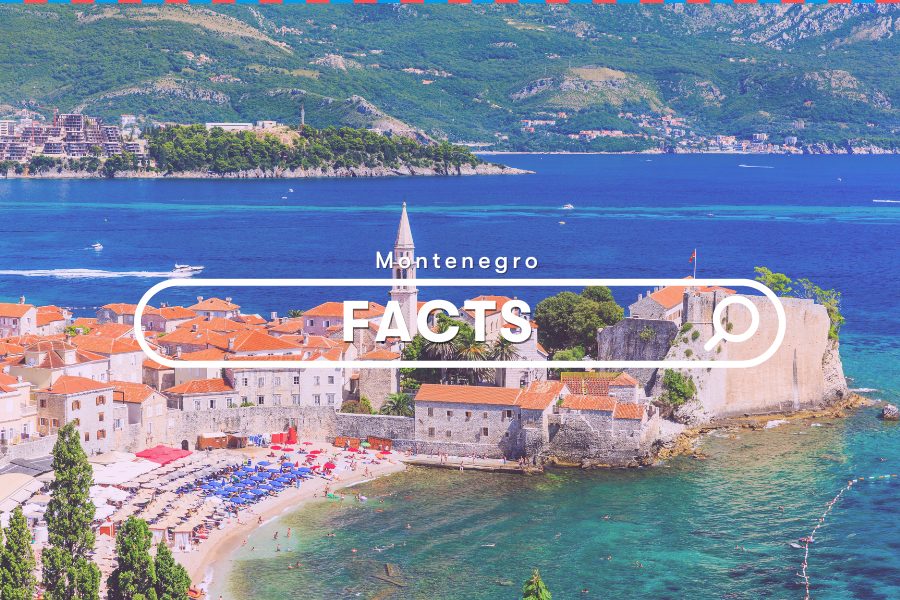9 Incredible Montenegrin Facts You Probably Didn't Know
In Montenegro, there are 117 beaches.

Regarding beaches, Montenegro has 117 along its 293 kilometres of coastline. There are rocky, sandy, little concealed, and gorgeous pink pebble ones. The tiny country's visitors are spoiled for options! A picture is indeed worth a thousand words in this scenario.
It's a birder's delight.

Lake Skadar in Montenegro is one of Europe's largest bird reserves. It is home to approximately 270 bird species and is a critical halt for migrating birds. The Dalmatian Pelicans are among the most common on the lake. Efforts to conserve their nesting sites have shown positive results, and visitors can now take a trip to see the birds aboard a traditional čun boat. Visitors can expect to observe pygmy cormorants, storks, egrets, ibises, herons, falcons, and spectacular pelicans. An ever-increasing group of flamingos calls an ancient salt works home further down the shore. The Ulcinjska Salinas, historically the Mediterranean's largest salt producer, is now home to over 500 flamingos and up to 40,000 birds at any given moment. To prevent overdevelopment, the area is set to join Lake Skadar on Ramsar's List of International Significance.
It has its own set of rules.

Montenegrins are noted for their laid-back attitude. They have their own set of rules to follow in this endeavour. "Love thy bed as oneself," "Whenever you see someone resting, aid him," and "If you feel the impulse to work, sit down, wait, and you'll see it will pass" are among them. Perhaps this is why Montenegrins are usually cheerful!
The Saint. Tryphon Cathedral in Kotor was planned to be in Dubrovnik.

St Tryphon's Cathedral, one of Kotor's most recognised monuments, is one of only two Roman Catholic cathedrals in Montenegro, and St Tryphon is the defender of Kotor. The current cathedral was erected on the site of an 809 church that housed St Tryphon's severed head after it was taken from Constantinople. Less well-known is that the saint's relics were on their route to Dubrovnik when they were stopped in Kotor and have remained there ever since.
Brad Pitt's first film performance was shot in Kotor.

Brad Pitt began his film career in Montenegro in 1988 before he became a household name. Pitt made his feature film debut in The Dark Side of the Sun, which was shot in Kotor. He was paid $1,523 for seven weeks of work, but the country must have affected him because he stated in 2010 that he wanted to exhibit Montenegro to his then-wife, Angelina Jolie.
It produces criminal geniuses.

The Pink Panthers are infamous criminals who have committed some of the most blatant thefts in criminal history. They're famed for pulling off amazing heists at some of the world's largest jewellery stores. They made an astonishing $100 million from a robbery at Harry Winston jewellers in Paris. In just six years, they've robbed 120 establishments in 20 countries and are well-known for their criminal prowess. Although the number of Pink Panthers members is unknown, most are from Serbia, Montenegro, and Croatia, with Montenegro accounting for around half.
It is home to the world's oldest olive tree.

The oldest olive tree in the world is Stara Maslina in Montenegro's southern town of Bar. The tree, which is almost 2,000 years old, is a beautiful attraction in a region famed for its hectares of beautiful olive groves. In fact, approximately 100,000 olive trees over 1,000 years old may be found in Bar! One side of the tree is burnt, and locals disagree on whether the fire was caused by a lightning strike or an accident during a card game under the tree. Given Montenegrins' penchant for smoking, drinking, and joking, it's more probable the latter.
Podgorica. No Titograd. No Podgorica.

Montenegro's capital city is Podgorica. The name Podgorica was first mentioned in 1326, but it was previously known as Ribnica, a settlement of the Nemanjic dynasty. After surviving successive invasions under Podgorica, the city was renamed Titograd as part of the Socialist Federal Republic of Yugoslavia in 1946. It was named after the SFRY's leader, Josip Broz Tito, and is literally translated as Tito City (there were already a lot of Tito Streets and Tito Squares). Titograd was renamed Podgorica in 1992 following the tumultuous disintegration of Yugoslavia. What a problem of an identity!
